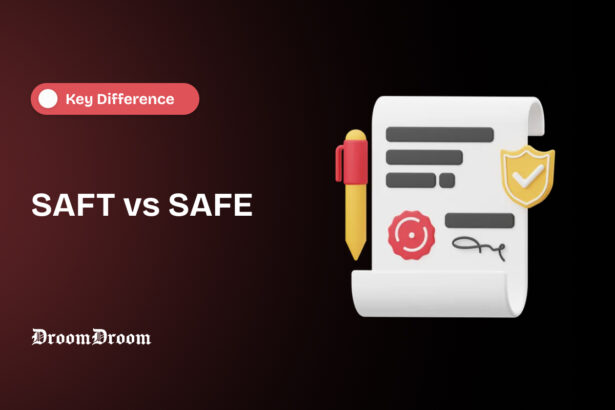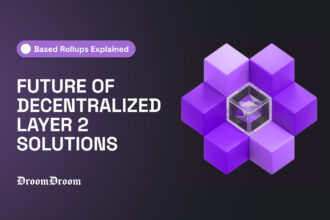As crypto becomes more popular, more startups are emerging with new ideas and innovations. If you are a new start-up seeking to raise funds, you have to understand two popular concepts in crypto fundraising: the Simple Agreement for Future Equity (SAFE) and the Simple Agreement for Future Tokens (SAFT).
At first glance, they seem as identical but some key differences have to be understood. In this article we delve into the fundraising strategy and legal obligations based on SAFE and a SAFT and find out the key difference between them. Let’s get started
What is SAFE?
SAFE stands for Simple Agreement for Future Equity a is a traditional investment contract that is used by early-stage startups for fundraising. It was developed by Y Combinator in 2013 as the alternative option to convertible debt.
Moreover, a simple Agreement for Future Equity is a contract that gives an investor the right to buy equity shares when a company raises a priced round (like in a Series-A round) or another agreed event happens. In simple words, an investor puts money into a startup and gets shares in the company later.
The price of the shares was not predetermined instead it is determined later at the time when a company raises the next funding round. If the company does well the investors benefit from this growth.
“Read this article for in-depth Knowledge of Venture Capital Funding in the Crypto Industry”
Key Features of SAFE
- SAFE are simpler and cheaper contracts than traditional investment documents. This advantage makes it a go-to instrument for early-stage startups to raise funding.
- When an individual signs a SAFE contract he or she does not get the shares immediately but instead receives shares in the future, usually when the company raises more money or hits a big milestone.
- SAFEs convert into shares when any specific event such as a funding round happens.
- Risk is high in the SAFEs as you don’t owe shares you will have them in the future. If the startups fail investors will struggle to get their money.
- There is no interest or any maturity date in the SAFEs. If a funding round or any other liquidity event never happens, the SAFE doesn’t need to be paid back.
- The terms vary depending upon one agreement to another as various versions of SAFEs exist.
- A SAFE agreement consists of a valuation cap and a discount. A valuation cap helps the invertors to get a good deal on their shares and the discount signifies that an investor will pay less on pers shares than later investors. In simpler words, they get a discount on their share because of early investment.
What is SAFT?
SAFT stands for Simple Agreement for Future Tokens also known as TPSA’s Token Pre-Sale Agreements is a modified version of SAFE. In the crypto industry, this instrument is used to raise funds by giving tokens in the future. The main thing that differs SAFT from SAFE is this contract promise of future tokens instead of equity. It is developed to simplify the fundraising process for blockchain startups.
If a crypto startup requires a token to function in their ecosystem then they raise the fund by selling investors a fixed amount of tokens in the future. By this method, they can use the funds raised in the fundraising for the development of their network, and technology and deliver a better product to the users. Investors also liquidate these tokens when they want.
Key Features of SAFT
- Blockchain firms that need tokens to run their ecosystem and technological development may raise funds by offering future tokens to investors similar to how traditional companies offer to raise money by promising future shares.
- SAFT agreements help the crypto or blockchain-based projects to get money for their technological development before the tokens are ready to buy and sell.
- SAFTs are offered to accredited investors after the identity and financial checks because selling SAFTs can be regulated like selling securities (stocks or bonds).
- Risk is also associated with the SAFT because users are investing money in the future success of the project which is uncertain. If the project doesn’t go well the investors don’t get any equity or tokens.
- SAFT convert into tokens when a projects initiate a token generation event. These tokens might restricted from selling for a time period also known as a “cliff” and “vesting” period.
“Know about the Crypto Presales and how they work on this DroomDroom blog post”
Things You Should Know About SAFT
Investors get their token when the network becomes functional. There are two types of tokens in the SAFT framework: utility tokens and Securities tokens. Utility tokens have some intrinsic value and are used for trading purposes as the network goes live. On the other hand, securities tokens are used as traditional securities.
Conclusion
SAFEs and SAFTs are both relatively new methods for startups to issue securities to the public, but they meet different needs in the tech and crypto space. SAFEs are a simple way for initial seed-stage companies to sell future equity to investors, while SAFTs enable blockchain projects to fund their projects by offering future tokens.
Both startups and investors need to understand the main distinctions, including the type of asset promised, the target investors, and the risks connected with such operations. Thus, the choice of the proper fundraising instrument helps startups foster their growth and development, and investors can make the right decision concerning the potential profit and loss they are going to face.




















